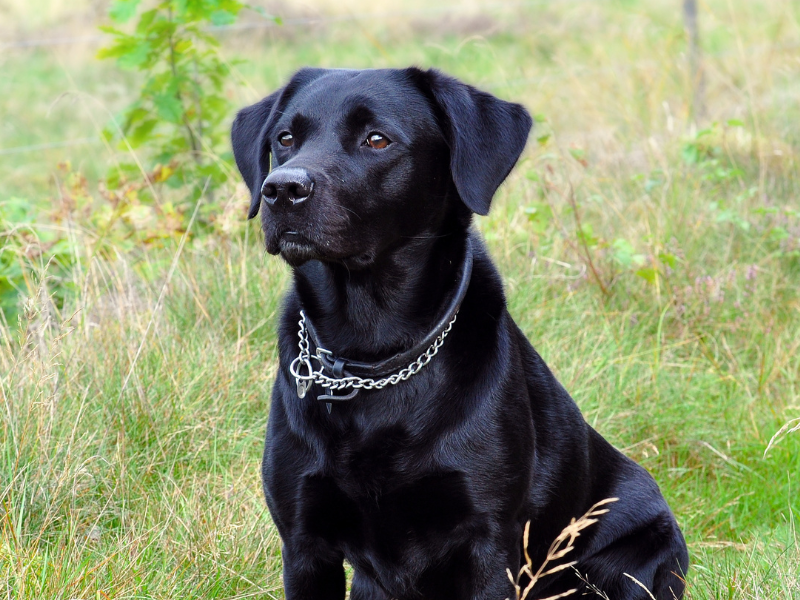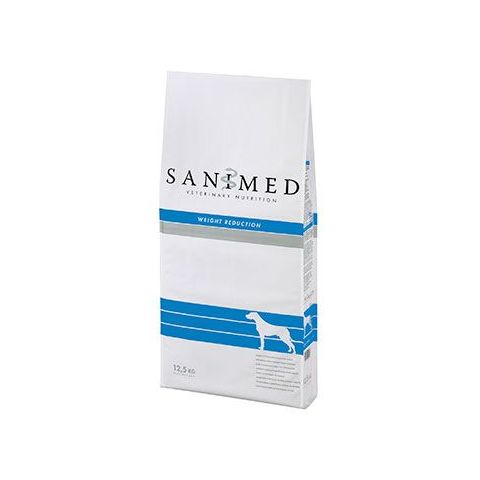Labrador Retriever
The Labrador is one of the most popular dog breeds. It is a true family dog and is known for its enthusiasm and obedience. However, Labradors can also be quite boisterous and stubborn, especially in their younger years. They thrive well with a calm, active owner who can devote enough time to exercise and mental challenges.
The Labrador Retriever in a nutshell
The Labrador Retriever, often simply called the Labrador, originally comes from Newfoundland, Canada. The breed was used for duck hunting: it had to bring back shot ducks to the hunter ('to retrieve' means 'to fetch/bring back'). For this, the Labrador had to swim long distances in often icy water. Hence the short, dense, waterproof coat and the sturdy tail (also known as the 'otter tail'), which could serve as a 'rudder' during swimming. Labradors often even have a kind of webbing between their toes!
Today, the Labrador is one of the most popular dog breeds in the world. Thanks to its traits, it is an excellent hunting dog, a good companion, and also suitable as a guide dog or detection dog. The average lifespan of a Labrador Retriever is between 11 and 12 years.
Labradors belong to breed group 8: 'Retrievers, Spaniels, and Water Dogs'. The coat can be black, yellow (ranging from light cream-colored to fox-red, also called 'blonde' Labrador), or liver/chocolate-colored, commonly referred to as 'gray' or 'brown' Labradors.
Character traits of the Labrador Retriever
The Labrador Retriever has a friendly and cheerful character. It is social and loves being around people. The breed is easy to train and is known for its obedience, as long as it is properly trained! Especially in their younger years, Labradors are very active and need a lot of exercise and mental stimulation. A lack of these can lead to behavioral problems and obesity.
Labradors usually get along well with children, but it is crucial that they are never left unsupervised with kids. Especially young Labradors can be too wild for small children, which can get worse if the children are also energetic.
Care of the Labrador Retriever
To keep your four-legged friend in top condition, it is important to properly care for them.

Skin and coat care of the Labrador
Taking care of a Labrador’s coat is simple. A weekly brush is enough, possibly supplemented with a damp cloth to remove dirt. During shedding periods, a rubber brush can help remove loose hairs. Labradors love to swim. After a dive in dirty water, water with algae, or seawater, it is advisable to rinse the dog with clean water. When washing, you can use a special dog shampoo such as Bogacare shampoo.
Labrador Retrievers often have a sensitive skin. Allergies such as atopy are common. By adding extra omega-3 fatty acids (EPA and DHA) from fish oil, you can support your dog's skin. Doils Skin and Seraquin Omega are supplements with high levels of EPA and DHA. For a dog with sensitive skin, frequent washing with shampoo is generally undesirable. If it is necessary to wash your dog, use a mild, moisturizing shampoo like Douxo Calm or Allermyl. An oatmeal-based shampoo is also very gentle and nourishing for the skin of an atopic dog. If your Labrador is prone to ear infections, after consulting your veterinarian, you can use a cleansing ear cleaner such as CleanAural Sensitive regularly to keep the ears clean. Dry skin can be treated with a moisturizing lotion based on oats such as DermAllay Oatmeal Conditioner Spray.
Obesity
The Labrador Retriever is a sturdy, active dog. For its work in the icy waters of Canada, it needed to build up a thick layer of fat for insulation. The tendency to gain weight likely comes from there: the average Labrador is always hungry, never satisfied, and can beg effectively with its big 'droopy' eyes. As a result, especially if the Labrador also gets less exercise than desired, unfortunately, obesity is very common within the breed. Combined with a tendency to joint problems, this is problematic. It is important, therefore, to keep the Labrador lean and active.
- By feeding its food in an anti-choking bowl or food ball, you promote slower eating, which helps with satiety. If your dog is already overweight, a special low-calorie diet with extra fiber will help them lose weight without feeling hungry.
The joints of a Labrador
Labradors have an increased tendency to joint problems such as elbow dysplasia and hip dysplasia. Arthritis is one of the most common age-related conditions in the Labrador Retriever. To minimize the risk of joint problems, you can take a few measures:
- Choose a reputable breeder who has had the hips and elbows of both parent dogs examined.
- Feed a good puppy food to support the development of bones, muscles, and joints.
- Prevent obesity.
- Gradually build up your puppy’s exercise and avoid overexertion. Prevent slipping on smooth floors by laying down rugs in the house.
- Keep your dog moving. Regular, straight-line movement is good, avoid heavy braking and turning. Swimming is a great low-impact exercise that trains the muscles and relieves the joints. Repeatedly climbing the steep side of a ditch is less beneficial.
- Supplements with fish oil or undenatured collagen-based supplements like Flexadin Advanced and harpagophytum like Iso-Joint +Acute can support your Labrador’s joints and help them stay as mobile as possible.
Also, a special joint-supporting diet helps your dog remain mobile.
Keeping your Labrador active
Labradors are energetic dogs that require plenty of exercise and mental challenges. Insufficient exercise can lead to obesity and lethargy. However, make sure that young dogs do not run too long or chase balls too much, as this can strain their hip and elbow joints. The same applies to wild play with other dogs and running up stairs.
Swimming is an excellent form of exercise that strengthens muscles without straining the joints. Walking alongside a bike can also help build muscle strength, which can prevent joint problems. However, only start this when the dog is fully grown, around one year of age, and gradually increase the intensity. Avoid biking with the dog in hot weather to prevent overheating.
The Labrador is ideal for activities such as obedience training, retrieving, scent work, and hunting training. The fact that it is so focused on food can be used to train and challenge it mentally: you can hide its kibble in the garden and have it use its nose, put them in an egg carton with paper crumpled inside, or teach it new commands with a treat as a reward. By using kibble from its daily portion instead of snacks, you avoid giving it excess calories.
With enough attention, exercise, mental challenges, proper care, and of course, a generous dose of love, the Labrador is a companion for life!
If you have any questions about the Labrador Retriever or our products, please contact us.




